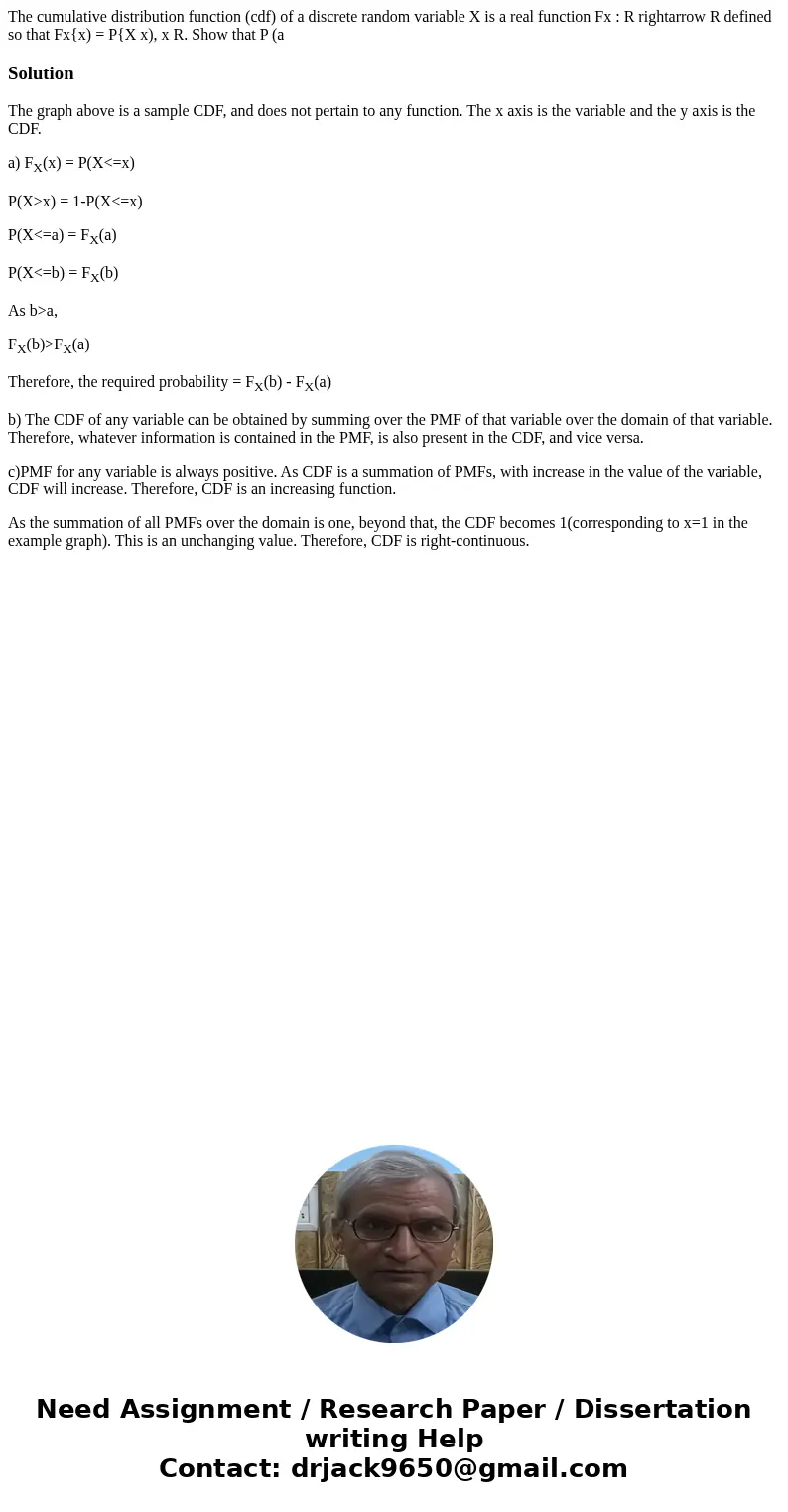The cumulative distribution function cdf of a discrete rando
Solution
The graph above is a sample CDF, and does not pertain to any function. The x axis is the variable and the y axis is the CDF.
a) FX(x) = P(X<=x)
P(X>x) = 1-P(X<=x)
P(X<=a) = FX(a)
P(X<=b) = FX(b)
As b>a,
FX(b)>FX(a)
Therefore, the required probability = FX(b) - FX(a)
b) The CDF of any variable can be obtained by summing over the PMF of that variable over the domain of that variable. Therefore, whatever information is contained in the PMF, is also present in the CDF, and vice versa.
c)PMF for any variable is always positive. As CDF is a summation of PMFs, with increase in the value of the variable, CDF will increase. Therefore, CDF is an increasing function.
As the summation of all PMFs over the domain is one, beyond that, the CDF becomes 1(corresponding to x=1 in the example graph). This is an unchanging value. Therefore, CDF is right-continuous.

 Homework Sourse
Homework Sourse